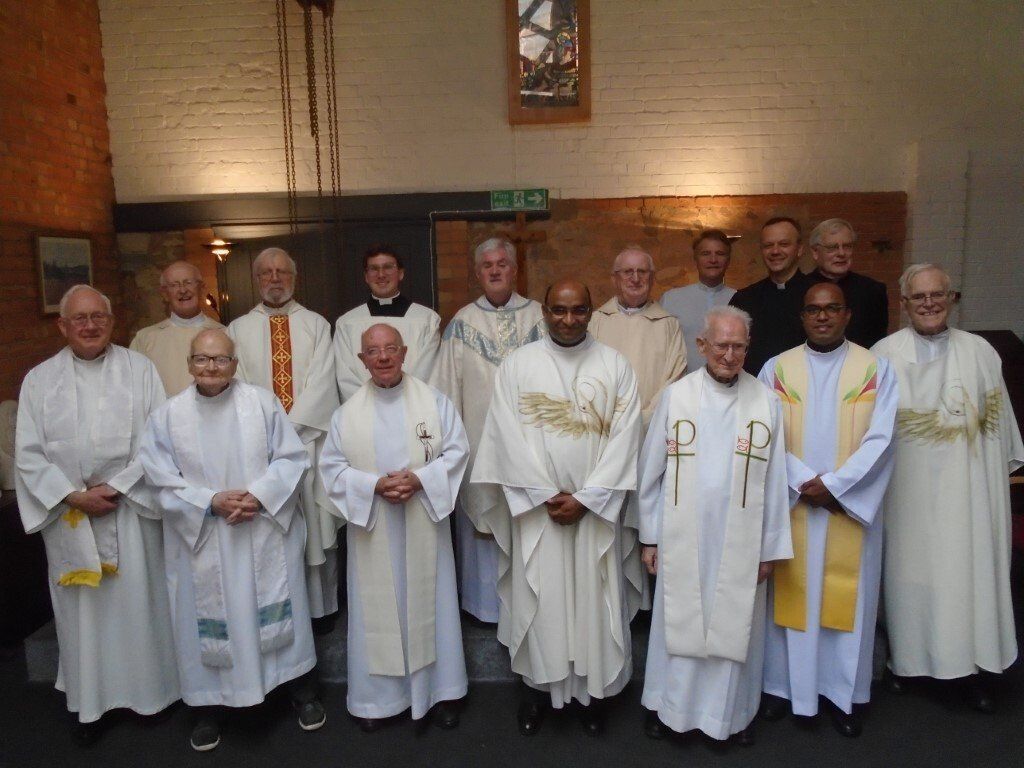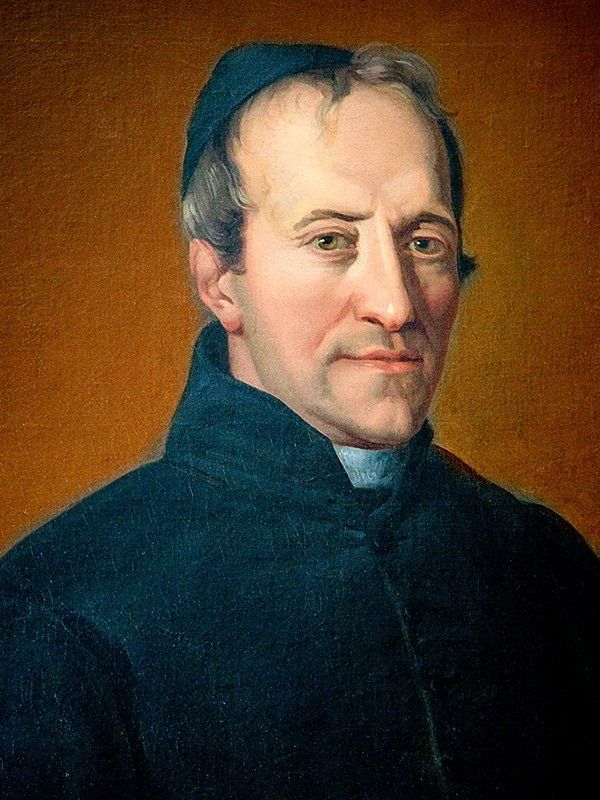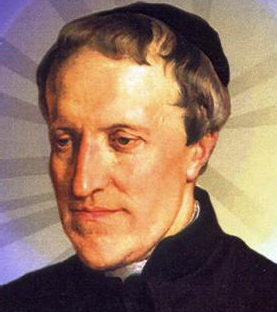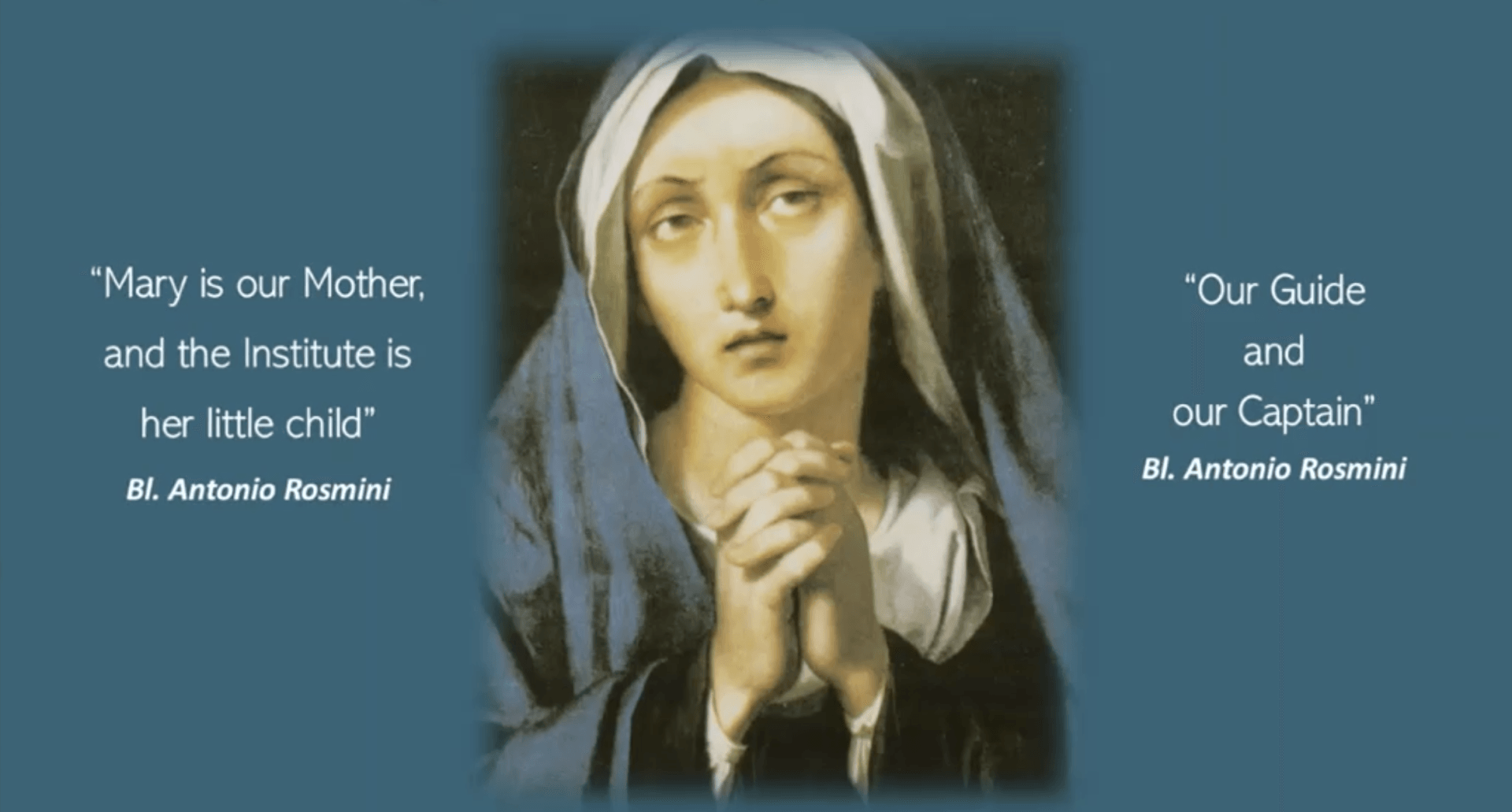Life of Blessed Antonio Rosminio
Excerpts from an article by Fr. Anthony Dewhirst
Introducing Antonio Rosmini
Sacro Monte Calvario di Domodossola
...then began to write the Constitutions which I finished, withthe help of God, on 23 April of thesame year 1828.’
In 1826 Rosmini went to Milan. He needed greater consultation in pursuing his political studies which were absorbing him at the time, he needed to meet competent scholars and experts and he could work without the distractions of home and the tantrums of his brother.
His two great friends in Milan were Count Giacomo Mellerio and Alessandro Manzoni, and he also met a priest from Lorraine the dynamic Jean Battiste Lowenbruck who enkindled in him the desire for a life consecrated to God. He made an appointment with his new-found friend to meet at a deserted sanctuary on Monte Calvario, Domodossola where they should spend the Lent of 1828 in order to try to discern what God’s will was for them. He writes in his Diary for 8 June 1827, ‘I met Giovambattista Loewenbruck at Count Giacomo Mellerio’s and he proposed to found a society for the formation of the Clergy. I told him the idea of my society of Charity.
...It is God’s will that you should write books; that is where your vocation lies. At the moment the Church is greatly in need of writers.’ Pope Pius VIII
Nowadays there is no other way to win people over than by the use of reason, and thereby lead them on to religion. You may be sure that you will do a great deal more for your neighbour by writing than by any other type of work in the sacred ministry.’ He also approved Rosmini’s action in founding of the Institute of Charity.
Rosmini remained in Rome another year for he wished to publish there his Massime di perfezione cristiana [Maxims of Christian Perfection] and his Nuovo saggio sull’origine delle idée [New Essay on the Origin of Ideas]. The Maxims is a brilliant summary of Rosmini’s ascetical teaching. But it was the Nuovo saggio, which burst on to the Roman scene to the great acclaim of the public who were intrigued by Rosmini’s new approach to the philosophy of the day. This was Rosmini’s first published major work and many others would follow over the years.New Paragraph






